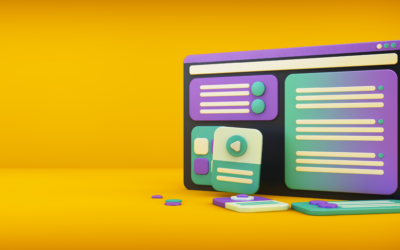Lessons from Anthropology: The Three Unforgivable Sins of User Experience
02
Aug 2023
-
CAtegories
-
Build | Tech | UX & Design
-
discover more
The User Experience has practically become a Commandment in marketing. “Design with the user in mind” and user-centered design has become such a commonplace mantra in tech, the title UX Designer sometimes seems to have swallowed the entire field of design. “Top 10 UX Fails!”-style articles litter the internet, with plentiful examples of poor UI/UX design wreaking havoc, from the common and minor (losing engagement and clicks on your poorly designed website) to the extremely costly ($900M for poor software design, anyone?) to the literally life-and-death (an errant checkbox can cost lives).
This focus on UX is well founded. Understanding your customer, and tailoring your product to meet both stated needs and unstated expectations, is mandatory in the Web X.0 hyper-personalized, hyper-competitive market. Today’s users expect things to simply work, to make intuitive sense immediately. They expect their experience with your product to be seamless, effortless—borderline psychic. After decades of increasingly good UX design, the bar has been raised, while barriers to customer exit have disappeared. Good UX is more important than ever.
But #BadUX is more than “just” bad design. At its core, it reflects a fundamental misunderstanding of the end user—-or worse, a total disregard for both the user and their experience interacting with your product. Reasons for sidelining the user experience are limitless, and understandable: hasty choices made in the race to be first to market; tunnel vision from the thrill of creating a new technology; tough financial compromises required to remain competitive…business is hard, and the paths to failure are many.
Essentially, however, there are three key sins when it comes to the user experience. These missteps lie at the heart of most user experience failures, from simple design mistakes to spectacular and expensive product flops. Examples of companies that have fallen prey to each loom large in our collective memory—and while we can kid ourselves that it mostly happened in the bad old days, before we grokked Big Data and could reliably hire End-User Whisperers, examples from the recent past are just as plentiful. Let these painful lessons serve as a reminder: User Experience really is the key.
User Experience Sin #1: Ignoring What the User Wants
What is the point of your product? Why are your customers coming to you? It seems impossibly basic, and almost absurd to think a company might ignore this most fundamental premise. But marketing textbooks are full of examples of once-successful brands that decided, Actually, I bet they really want…this entirely different thing.
Take, for example, Circuit City. This classic from way back in 2007 shows the dangers of putting cost-cutting ahead of providing your core service. Replacing veteran, knowledgeable staff with cheap, inexperienced employees proved near-fatal to a brick-and-mortar competing with online retailers; it turns out quality face-to-face customer service is pretty central to your value proposition – i.e. providing what the user wants – when they make the choice to leave the couch and venture into meatspace. Proponents of self-checkout and automated-everything, take note.
Other examples abound, from the infamous Edsel flop to the ‘New Coke’ debacle, not overlooking that time Coors thought people might actually want sparkling water instead of, you know, beer. Yes, innovation is crucial, but not all innovations will succeed – and knowing why your customer chose your product, and then making sure you keep delivering on that, is Rule #1 to stay in business. UX design doesn’t matter if the user doesn’t want to experience your product.
User Experience Sin #2: Disregarding How the User Prefers to Interact
Maybe it’s limiting your customer support to one channel only, or insisting users register for an account to check out. Maybe it’s streamlining your website so much users can no longer find the ‘Buy’ button.
Or maybe it’s removing the features that differentiate your product in the first place. Our favorite example of this sin can be found in the fall of Digg, a social bookmarking site that allowed up-and-down voting (similar to Reddit) – but decided it too wanted to become a social network, complicating its design while eliminating the features that had made it popular. The result was users that couldn’t interact in the way they were used to—and preferred; rather than allow themselves to be shoehorned into Digg’s new paradigm, they abandoned the platform.
Another example? Yik Yak, which offered users complete anonymity – and then, when cyberbullying threatened to bring the company down, tried to compromise with pseudonymous ‘handles.’ But users weren’t having it, since the anonymity was the point—and the once-promising start-up failed.
The lesson here? Pay attention to how your users are using your product. Don’t fall victim to this sin by rolling out exciting new features without ample testing and research beforehand- and definitely don’t try to force your users to behave the way you think they should.
User Experience Sin #3: Forgetting Who Your Users Are
This is the big one. You’ve spent the time and resources to identify your users, build personas, create customized content and customer journeys. Don’t suddenly develop amnesia and throw all this hard-won knowledge away with a total pivot or rebrand.
Exhibit A: Reddit. This year, Reddit made the decision to phase out the use of third-party tools for accessing the platforms feed (among other, questionable changes), strong arming users into having only 1 option for reading and viewing content on Reddit from their mobile device – theirs. The kicker was that many of their user base relied on these third-party applications to provide an accessibly friendly way to access the app’s content. This was coming on the heels of a complete redesign of the platform, making way for “New Reddit” that many users hated. As a result, a mass meltdown on the platform occurred where users exited in droves and over 8000 communities flipped to private overnight in an effort to protest the change, plus made their voice heard when Reddit reopened their r/place community.
The Unholy Trinity: Users? What Users?
Sometimes, a company manages to commit all three sins at the same time, seemingly throwing out any concept whatsoever of User Experience. They change focus, losing sight of what they are actually providing to their customers. They change beloved features or eliminate popular options, frustrating their users. And worst of all, pursue a new ideal customer, leaving existing customers alienated and angry.
Look no further than Twitter for an example of this kind of User Experience Ultimate Fail happening in real time. Since October 2022, Twitter has undergone a series of disruptive, unwelcome and inconsistent changes that have sparked outrage, alienation—and a stampede for the exits. While Twitter may still reverse course and save itself, at the moment it looks like a perfect storm of indifference: the sale of Blue-Checks has upended their role as a platform for communications from trusted sources; changes to content moderation policies and unpredictable bans with post-hoc justification have made the user experience unreliable and unpleasant; pronouncements from the company head seem deliberately designed to alienate and drive away at least a large portion of the key user base. Time will tell if the strategy works, but at the moment the prognosis isn’t good.







